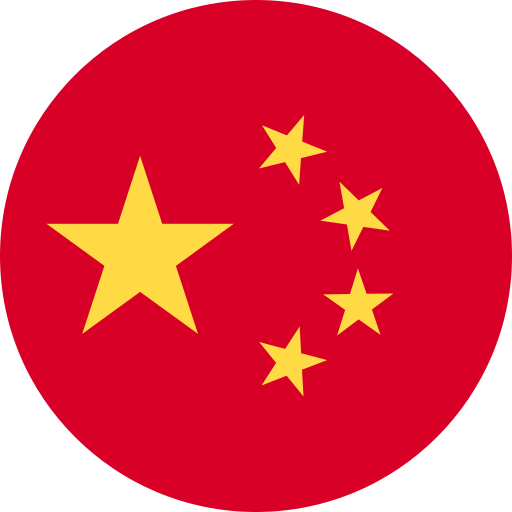Key Takeaways
- Historical Evolution: The Chinese language has evolved over three millennia, influenced by cultural shifts and historical events from ancient scripts to modern dialects.
- Phonetic Complexity: Mandarin features a tonal system with four distinct tones, while regional dialects showcase diverse phonetics that enrich the linguistic landscape.
- Morphological Richness: Word formation processes like compounding and reduplication illustrate how meaning is efficiently conveyed in Chinese, highlighting its expressive capabilities.
- Lexical Borrowings: The vocabulary of Chinese includes numerous loanwords from various languages throughout history, demonstrating adaptability and cultural exchange.
- Writing System Development: Chinese characters have transitioned through different styles over centuries, with simplification efforts impacting literacy and cultural communication practices.
Have you ever wondered how the Chinese language evolved into what it is today? The linguistic history of Chinese is a fascinating journey that spans thousands of years, shaped by cultural shifts and historical events. Understanding this evolution not only enriches your appreciation for the language but also helps you grasp its complexities.
From ancient scripts to modern dialects, each phase reveals something unique about China’s rich heritage. Whether you’re learning Mandarin or simply curious about its roots, exploring this history can unlock insights that make your experience more rewarding. Dive in to discover how the past continues to influence the present and why knowing this history matters more than ever.
Overview of Linguistic History of Chinese
The linguistic history of Chinese spans over three millennia, showcasing a remarkable evolution influenced by various cultural and historical factors. The earliest documented form of Chinese dates back to the Shang Dynasty (1600-1046 BCE), where oracle bone inscriptions provided insights into ancient society and beliefs.
During the Zhou Dynasty (1046-256 BCE), the language underwent significant development. Classical Chinese emerged as a formal written language, characterized by its concise structure and rich literary tradition. This period laid the foundation for future dialects and variations within the language.
With the rise of different dynasties, regional differences in pronunciation, vocabulary, and grammar became more pronounced. The influence of neighboring languages also contributed to these changes. For instance, during the Tang Dynasty (618-907 CE), interactions with Central Asia enriched Mandarin’s lexicon.
In contemporary times, Standard Mandarin has become the official language of China, unifying numerous dialects under one umbrella. However, dialects like Cantonese and Wu still thrive in their respective regions. These dialects reflect unique historical developments while maintaining connections to their linguistic roots.
Understanding this linguistic journey is crucial for anyone interested in mastering Mandarin or exploring China’s cultural heritage. Each phase reflects not just changes in communication but also shifts in societal values and power dynamics throughout history.
Phonetics and Phonology
Phonetics and phonology play crucial roles in understanding the sounds of the Chinese language. They encompass how these sounds are produced, perceived, and organized within various dialects.
Evolution of Sounds
The evolution of sounds in Chinese reflects significant historical changes. Early forms featured a limited phonetic inventory, primarily consisting of simple consonants and vowels. Over time, the introduction of tones added complexity; modern Mandarin has four distinct tones that differentiate meanings between words with similar syllables. For instance, ”ma” can mean mother or horse depending on its tone. This tonal aspect enhances expressiveness but also poses challenges for learners unfamiliar with tonal languages.
Dialectical Variations
Dialectical variations showcase the diversity within Chinese phonetics and phonology. Regions across China exhibit unique sound systems influenced by geographical and cultural factors. Cantonese features six to nine tones compared to Mandarin’s four, while Wu dialects present different vowel qualities and consonant clusters. These variations not only enrich the linguistic landscape but also highlight regional identities among speakers. Understanding these differences is essential for anyone looking to grasp the full spectrum of the Chinese language experience.
Exploring phonetics and phonology deepens your comprehension of spoken Chinese, revealing how linguistic nuances shape communication throughout history.
Morphology and Syntax
Morphology and syntax in the Chinese language reveal the intricate ways words are formed and sentences are structured. Understanding these elements provides insight into how meaning is conveyed, reflecting historical developments and regional variations.
Word Formation Processes
Chinese employs various word formation processes that contribute to its unique linguistic characteristics. Compounding is a prevalent method, where two or more morphemes combine to create new words. For example, ”电话” (diànhuà), meaning telephone, blends ”电” (electric) and ”话” (speech). Affixation plays a lesser role compared to compounding but still exists; for instance, adding suffixes can modify meanings or grammatical functions.
Reduplication also serves as a notable process in Chinese morphology. This involves repeating characters or syllables to express plurality or emphasis. For example, ”看看” (kànkàn) means to take a look or check something out casually. These processes enhance expressive capabilities within the language, allowing speakers to convey nuanced meanings efficiently.
Sentence Structure Development
Chinese sentence structure has evolved significantly over time while maintaining key features that define it today. Typically, sentences follow a Subject-Verb-Object (SVO) order. For instance, ”我吃苹果” (Wǒ chī píngguǒ) translates directly to ”I eat apple.” This straightforward structure facilitates clarity in communication.
In addition to basic SVO constructions, Chinese allows for flexibility through topic-comment structures. You might encounter sentences where the topic precedes any action being described. An example includes: ”这本书,我喜欢” (Zhè běn shū, wǒ xǐhuān), which highlights “this book” before stating your feelings about it.
Moreover, modifiers like adjectives often appear before nouns they describe—like in “红色的花” (hóngsè de huā), which means “red flower.” Such features not only enrich expression but also demonstrate how cultural context influences syntax throughout history.
By understanding these morphological and syntactic elements of Chinese, you gain deeper insights into its complexities and appreciate how this ancient language continues adapting through time.
Vocabulary and Lexicon
The vocabulary and lexicon of Chinese reflect its extensive history and cultural richness. Understanding these elements provides insight into the language’s evolution and regional variations.
Borrowings and Loanwords
Chinese has absorbed a multitude of loanwords from various languages throughout its history. These borrowings often stem from trade, cultural exchange, or technological advancements. For example, during the Tang Dynasty, interactions with Central Asia introduced terms like ”胡椒” (hújiāo) for pepper. In modern times, globalization led to the integration of words like ”咖啡” (kāfēi) for coffee and ”沙发” (shāfā) for sofa from English. Such loanwords enrich the lexicon while showcasing how external influences shape language development.
Semantic Changes
Semantic changes in Chinese illustrate how meanings evolve over time. Words often shift in meaning due to social changes or new contexts. For instance, ”家” (jiā) originally referred to a family but now also encompasses concepts of home and belonging. Similarly, ”网络” (wǎngluò), which means network, transitioned from describing physical networks to encompassing digital connections in today’s internet age. These semantic shifts highlight adaptability within the language, allowing it to stay relevant as society progresses.
Understanding these aspects of vocabulary not only enhances your grasp of Chinese but also offers a window into its dynamic nature across centuries.
Writing Systems in Chinese
Writing systems in Chinese reflect the language’s historical depth and cultural significance. The evolution of these writing systems reveals much about how communication developed over thousands of years.
Evolution of Characters
Chinese characters, known as 汉字 (hànzì), originated during the Shang Dynasty around 1600-1046 BCE. Early forms included oracle bone script, used for divination on animal bones and turtle shells. Over time, these characters transitioned into seal script during the Qin Dynasty (221-206 BCE). As dynasties changed, so did the styles; clerical script emerged in the Han Dynasty (206 BCE-220 CE), simplifying some complex strokes for practical use.
The regular script we see today took shape during the Tang Dynasty (618-907 CE). This style became standardized and remains prevalent in modern usage. Each character represents a morpheme or a meaningful unit, often combining ideographic elements to convey ideas visually. For example, “山” (shān) depicts mountains with its three peaks.
Impact of Simplification
Character simplification began in the early 20th century as part of educational reforms aimed at increasing literacy rates. The government introduced simplified characters to reduce stroke counts and enhance learning efficiency—think “汉” (hàn) instead of “漢” (hàn). This change significantly impacted various aspects of culture and communication across China.
Simplified characters gained official status in mainland China but are not universally adopted; traditional characters remain popular in Taiwan and Hong Kong. Understanding both systems is crucial for interpreting regional texts accurately. Ongoing debates surround simplification’s implications on cultural heritage versus practicality continue to shape discussions among linguists today.
Chinese writing has transitioned through distinct phases that mirror historical developments while influencing contemporary practices across different regions.
Conclusion
The linguistic history of Chinese is a fascinating journey through time that reflects cultural evolution and regional diversity. By exploring its phonetics morphology syntax vocabulary and writing systems you gain valuable insights into how this language has shaped communication across millennia. Understanding these elements not only enriches your appreciation of Mandarin but also invites you to explore the myriad dialects that contribute to China’s unique linguistic landscape. As you delve deeper into this complex language you’ll uncover layers of meaning that reveal the rich tapestry of Chinese culture and identity.
Frequently Asked Questions
What is the history of the Chinese language?
The Chinese language has a rich history that spans over three millennia, beginning with its earliest documented form during the Shang Dynasty. It evolved significantly through various dynasties, influenced by cultural shifts and historical events, leading to modern Standard Mandarin.
How did regional dialects develop in Chinese?
Regional dialects emerged as different dynasties influenced local speech patterns. Interactions with neighboring cultures enriched these dialects, resulting in significant variations such as Cantonese and Wu, which continue to reflect distinct regional identities today.
What role do tones play in Mandarin?
Tones are crucial in Mandarin as they can change a word’s meaning entirely. For instance, ”ma” can mean ”mother” or ”horse,” depending on its tone. Modern Mandarin features four distinct tones that add complexity to pronunciation.
How does syntax work in the Chinese language?
Chinese typically follows a Subject-Verb-Object (SVO) structure but allows flexibility through topic-comment arrangements. Modifiers like adjectives usually precede nouns, reflecting how cultural context influences sentence formation.
What are some unique features of Chinese vocabulary?
Chinese vocabulary reflects its extensive history and absorbs many loanwords from other languages due to trade and cultural exchange. Semantic changes also occur over time, showing how meanings evolve with social contexts.
How have writing systems evolved in China?
Chinese characters have evolved from their origins during the Shang Dynasty through various scripts to standardized forms established during the Tang Dynasty. Simplification efforts aimed at increasing literacy rates have led to ongoing debates about cultural heritage preservation between simplified and traditional characters.







